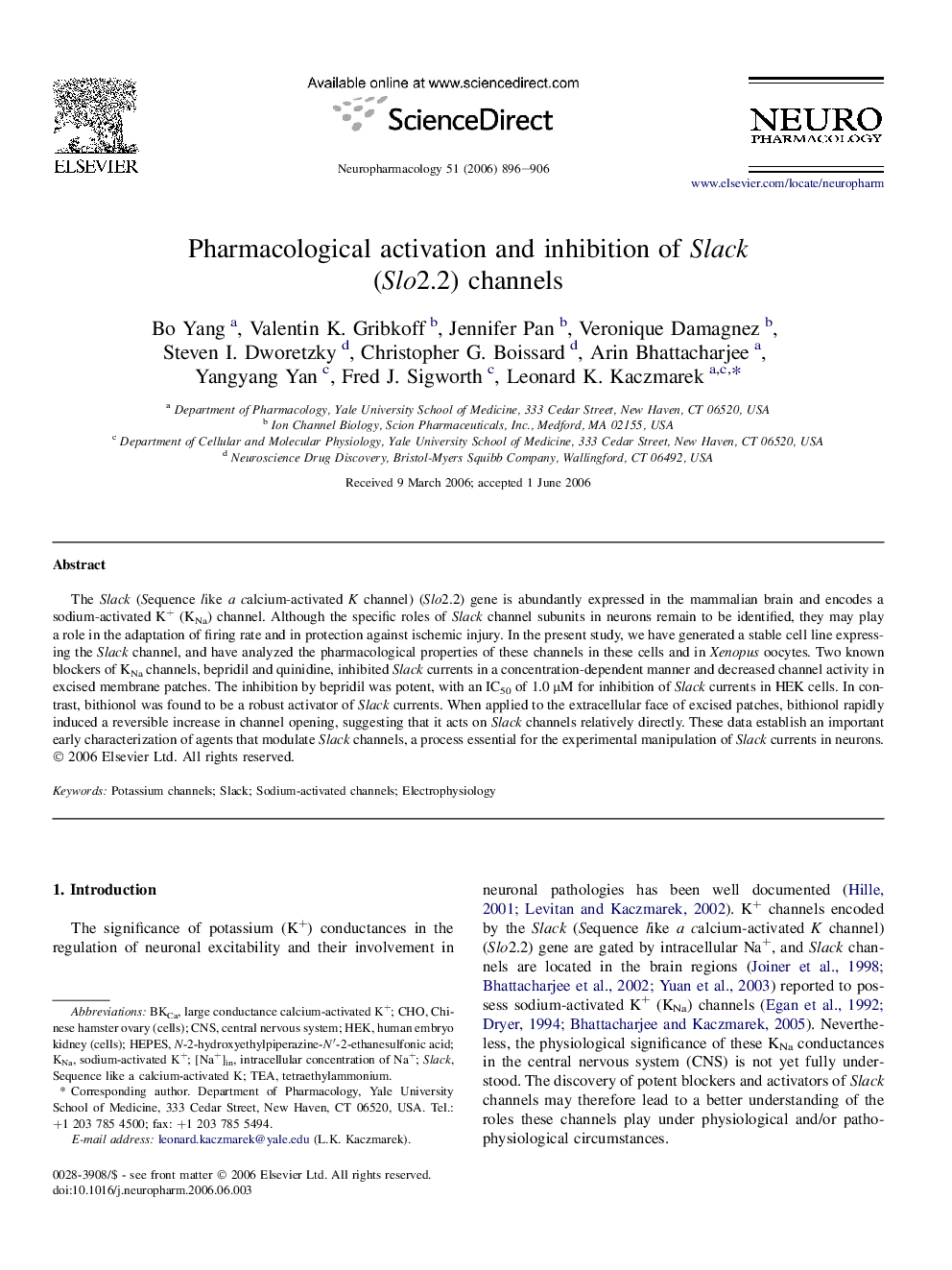| Article ID | Journal | Published Year | Pages | File Type |
|---|---|---|---|---|
| 2495109 | Neuropharmacology | 2006 | 11 Pages |
The Slack (Sequence like a calcium-activated K channel) (Slo2.2) gene is abundantly expressed in the mammalian brain and encodes a sodium-activated K+ (KNa) channel. Although the specific roles of Slack channel subunits in neurons remain to be identified, they may play a role in the adaptation of firing rate and in protection against ischemic injury. In the present study, we have generated a stable cell line expressing the Slack channel, and have analyzed the pharmacological properties of these channels in these cells and in Xenopus oocytes. Two known blockers of KNa channels, bepridil and quinidine, inhibited Slack currents in a concentration-dependent manner and decreased channel activity in excised membrane patches. The inhibition by bepridil was potent, with an IC50 of 1.0 μM for inhibition of Slack currents in HEK cells. In contrast, bithionol was found to be a robust activator of Slack currents. When applied to the extracellular face of excised patches, bithionol rapidly induced a reversible increase in channel opening, suggesting that it acts on Slack channels relatively directly. These data establish an important early characterization of agents that modulate Slack channels, a process essential for the experimental manipulation of Slack currents in neurons.
